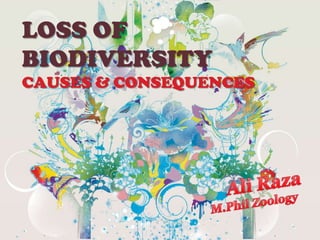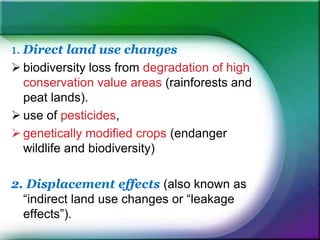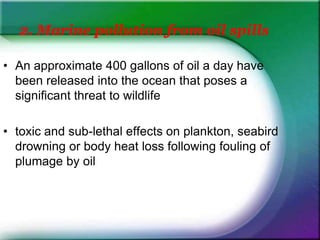This document discusses biodiversity loss and its causes and consequences. It defines biodiversity as the variety of life on Earth, including genetic, species, and ecosystem diversity. The major direct causes of biodiversity loss are identified as land use change, pollution, overexploitation of resources, invasive species, and climate change. Specific threats are discussed, such as agricultural expansion, deforestation, freshwater and marine pollution, unsustainable fishing and mining practices, and climate change impacts like coral bleaching. Conservation efforts and solutions mentioned include expanding protected areas, economic incentives, preventing invasive species, mainstreaming biodiversity, and raising public awareness.






































